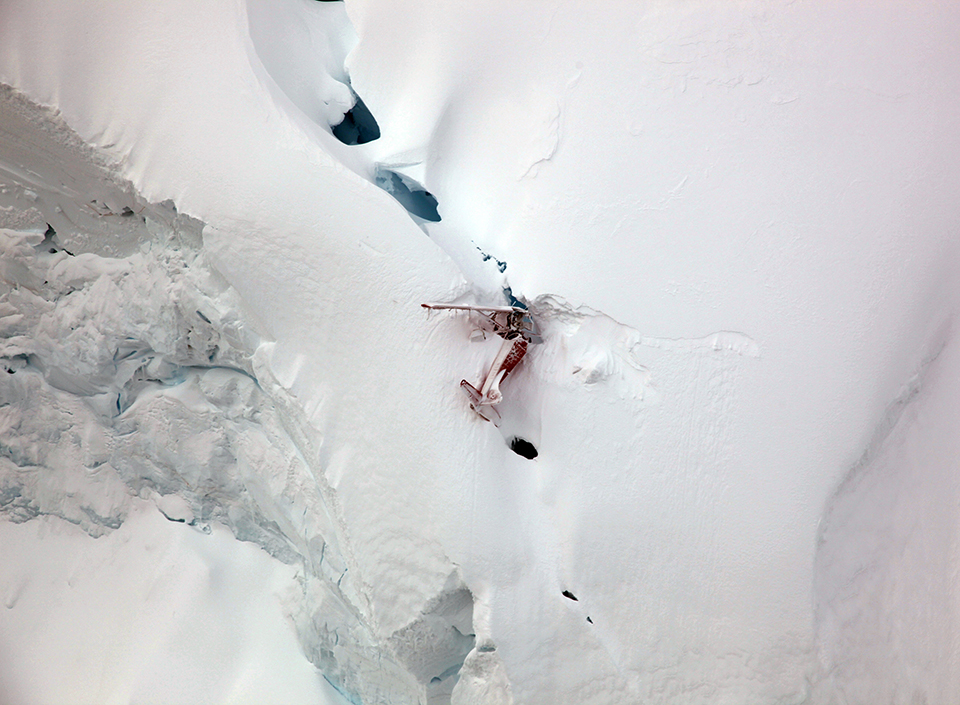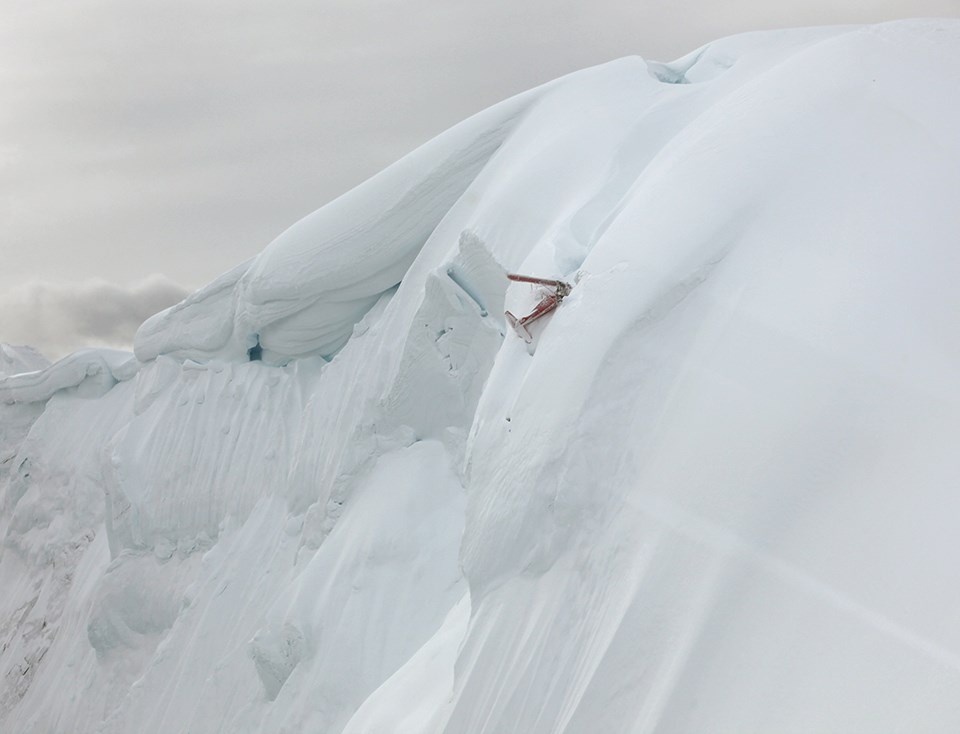News Release
You are viewing ARCHIVED content published online before January 20, 2025.
Please note that this content is NOT UPDATED, and links may not work. For current information,
visit https://www.nps.gov/aboutus/news/index.htm.

NPS
|
Subscribe
|
Contact: Katherine Belcher, 907.683.9583
TALKEETNA, Alaska – After dealing with heavy cloud cover most of the week, rangers with the National Park Service today were able to investigate the wreckage of a flightseeing plane that crashed in Denali National Park and Preserve on Aug. 4 with five people onboard.A temporary flight restriction of three miles was put into effect as rangers gathered information for a recovery feasibility assessment. An NPS ranger was short-hauled to the crash site in the NPS AStar B3e high-altitude helicopter and searched the wreckage for nearly an hour, but had to remain attached to the helicopter for safety concerns.
The de Havilland Beaver (DHC-2), operated by K2 Aviation and flown by pilot Craig Layson, was carrying four Polish passengers when it crashed near the summit of Thunder Mountain, roughly 14 miles southwest of the summit of Denali. NPS confirmed on Monday that four people died and a fifth was unaccounted for. Rangers located the fifth body inside the wreckage earlier today. NPS is not releasing the names of the passengers at the request of the Consulate General of the Republic of Poland in Los Angeles.
Throughout recovery operations this week, the focus of NPS has been on the safety of personnel, the stability of the aircraft and the complexity of the mission to recover the bodies. NPS rangers have made two short-haul visits to the crash site and gathered information to assess these issues.
Hazards at the crash site include, but are not limited to, avalanche danger, steep snow/ice, crevasses, unstable seracs (blocks of ice loosely attached to the mountain) and aircraft-related concerns such as protruding pieces of jagged metal. The crevasse where the wreckage sits is a dangerous and potentially fatal terrain trap should even a small avalanche occur. The aircraft is broken in half behind the wing, and the tail section of the fuselage is actively pulling down the aircraft towards a glacier 3,500 feet below. Additionally, more than two and a half feet of new snow has fallen at the crash site and loaded the nearly 45-degree slope just above the aircraft.
Recovering the bodies and the aircraft under the current conditions would require an extremely complex and unfeasible recovery operation. NPS looks at three primary factors when evaluating risk: severity, probability and exposure. Due to the unique challenges posed by the steepness of terrain, the crevasse, avalanche hazard and the condition of the aircraft, NPS has determined that recovery of the deceased and/or removal of the aircraft exceed an acceptable level of risk in all three factors and will not be attempted.

NPS
Last updated: August 13, 2018
